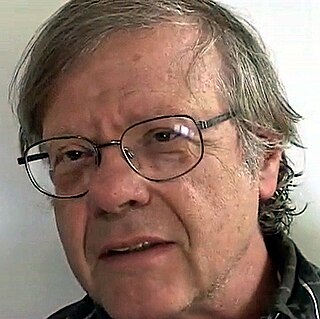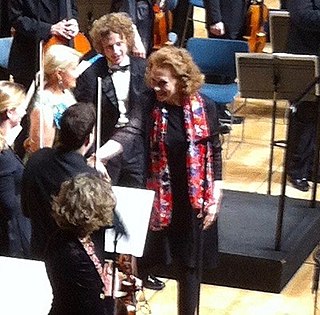Electronic music broadly is a group of music genres that employ electronic musical instruments, circuitry-based music technology and software, or general-purpose electronics in its creation. It includes both music made using electronic and electromechanical means. Pure electronic instruments depended entirely on circuitry-based sound generation, for instance using devices such as an electronic oscillator, theremin, or synthesizer. Electromechanical instruments can have mechanical parts such as strings, hammers, and electric elements including magnetic pickups, power amplifiers and loudspeakers. Such electromechanical devices include the telharmonium, Hammond organ, electric piano and electric guitar.

An electronic musical instrument or electrophone is a musical instrument that produces sound using electronic circuitry. Such an instrument sounds by outputting an electrical, electronic or digital audio signal that ultimately is plugged into a power amplifier which drives a loudspeaker, creating the sound heard by the performer and listener.

The theremin is an electronic musical instrument controlled without physical contact by the performer. It is named after its inventor, Leon Theremin, who patented the device in 1928.

Roger Lee Reynolds is an American composer. He is known for his capacity to integrate diverse ideas and resources, and for the seamless blending of traditional musical sounds with those newly enabled by technology. Beyond composition, his contributions to musical life include mentorship, algorithmic design, engagement with psychoacoustics, writing books and articles, and festival organization.
Electroacoustic music is a genre of popular and Western art music in which composers use technology to manipulate the timbres of acoustic sounds, sometimes by using audio signal processing, such as reverb or harmonizing, on acoustical instruments. It originated around the middle of the 20th century, following the incorporation of electric sound production into compositional practice. The initial developments in electroacoustic music composition to fixed media during the 20th century are associated with the activities of the Groupe de recherches musicales at the ORTF in Paris, the home of musique concrète, the Studio for Electronic Music in Cologne, where the focus was on the composition of elektronische Musik, and the Columbia-Princeton Electronic Music Center in New York City, where tape music, electronic music, and computer music were all explored. Practical electronic music instruments began to appear in the early 20th century.

Benjamin Aaron Boretz is an American composer and music theorist.
George Rochberg was an American composer of contemporary classical music. Long a serial composer, Rochberg abandoned the practice following the death of his teenage son in 1964; he claimed this compositional technique had proved inadequate to express his grief and had found it empty of expressive intent. By the 1970s, Rochberg's use of tonal passages in his music had provoked controversy among critics and fellow composers. A professor at the University of Pennsylvania until 1983, Rochberg also served as chairman of its music department until 1968. He became the first Annenberg Professor of the Humanities in 1978.

Kaija Anneli Saariaho was a Finnish composer based in Paris, France. During the course of her career, Saariaho received commissions from the Lincoln Center for the Kronos Quartet and from IRCAM for the Ensemble Intercontemporain, the BBC, the New York Philharmonic, the Salzburg Music Festival, the Théâtre du Châtelet in Paris, and the Finnish National Opera, among others. In a 2019 composers' poll by BBC Music Magazine, Saariaho was ranked the greatest living composer.

Karlheinz Essl is an Austrian composer, performer, sound artist, improviser, and composition teacher.

The Rhythmicon—also known as the Polyrhythmophone—was an electro-mechanical musical instrument designed and built by Leon Theremin for composer Henry Cowell, intended to reveal connections between rhythms, pitches and the harmonic series. It used a series of perforated spinning disks, similar to a Nipkow disk, to interrupt the flow of light between bulbs and phototoreceptors aligned with the disk perforations. The interrupted signals created oscillations which were perceived as rhythms or tones depending on the speed of the disks. Although it generated both pitches and rhythms, it has often been described as the world's first drum machine.

Tod Machover, is a composer and an innovator in the application of technology in music. He is the son of Wilma Machover, a pianist and Carl Machover, a computer scientist.
Rolf Rainer Gehlhaar was an American composer, Professor in Experimental Music at Coventry University and researcher in assistive technology for music.

Kasper T. Toeplitz is a French composer and musician of Polish origin, born in 1960. He lives in Paris.

Huck Hodge is an American composer of contemporary classical music.
Live electronic music is a form of music that can include traditional electronic sound-generating devices, modified electric musical instruments, hacked sound generating technologies, and computers. Initially the practice developed in reaction to sound-based composition for fixed media such as musique concrète, electronic music and early computer music. Musical improvisation often plays a large role in the performance of this music. The timbres of various sounds may be transformed extensively using devices such as amplifiers, filters, ring modulators and other forms of circuitry. Real-time generation and manipulation of audio using live coding is now commonplace.
David Aaron Jaffe is an American composer who has written over ninety works for orchestra, chorus, chamber ensembles, and electronics. He is best known for his use of technology as an electronic-music or computer-music composer in works such as Silicon Valley Breakdown, though his non-electronic music has also been widely performed. He is also known for his development of computer music algorithmic innovations, such as the physical modeling of plucked and bowed strings, as well as for his development of music software such as the NeXT Music Kit and the Universal Audio UAD-2/Apollo/LUNA Recording System.

Elaine "Ray" Barkin was an American composer, writer, and educator.
Stevie Wishart is a composer, improviser, and performer on the hurdy-gurdy and violin. Mainly involved in contemporary music, she has also had a career in early music and has edited and recorded the complete works of Saint Hildegard of Bingen, as well as performing music from the repertoire of the medieval troubadours, trouvères and the Cantigas de Santa Maria, with her ensemble Sinfonye.

Edgard Victor Achille Charles Varèse was a French composer who spent the greater part of his career in the United States. Varèse's music emphasizes timbre and rhythm; he coined the term "organized sound" in reference to his own musical aesthetic. Varèse's conception of music reflected his vision of "sound as living matter" and of "musical space as open rather than bounded". He conceived the elements of his music in terms of "sound-masses", likening their organization to the natural phenomenon of crystallization. Varèse thought that "to stubbornly conditioned ears, anything new in music has always been called noise", and he posed the question, "what is music but organized noises?"










